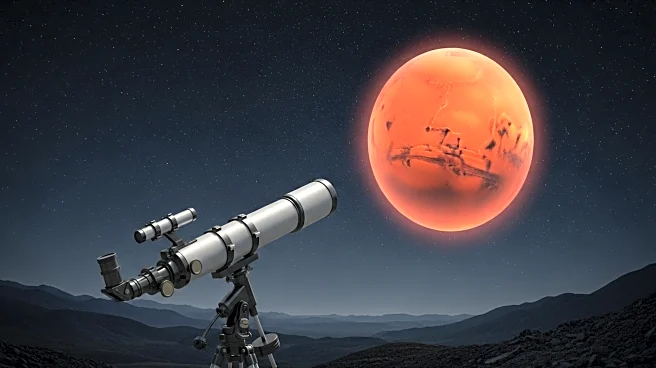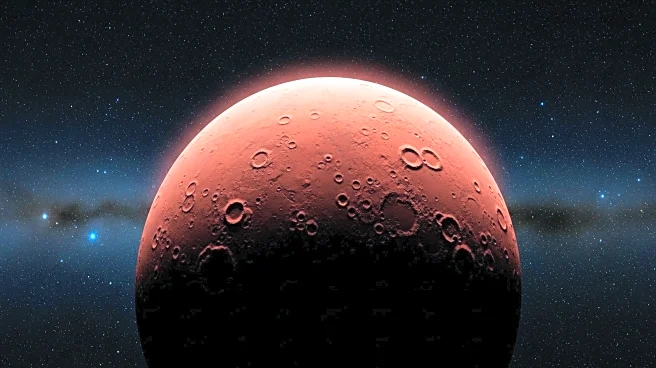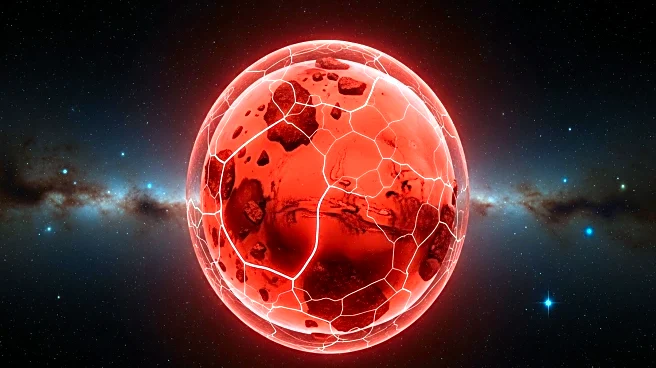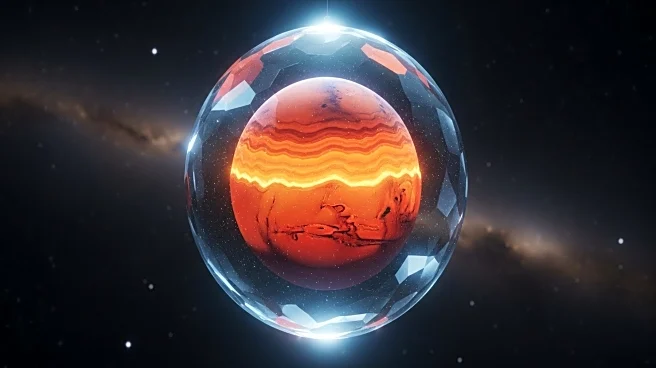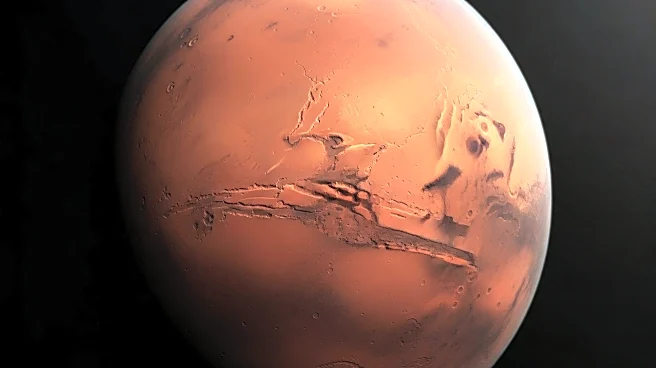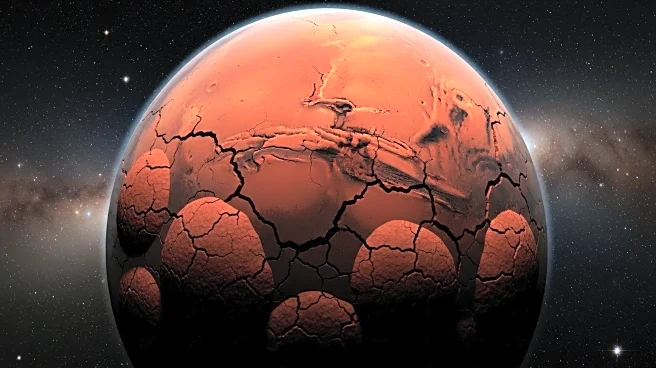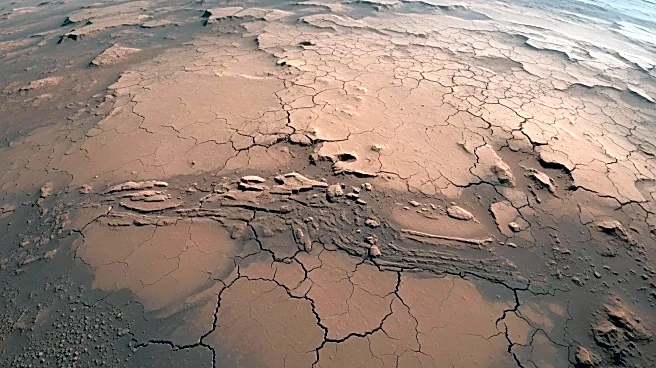What is the story about?
What's Happening?
Recent research published in the journal Science has uncovered that Mars's mantle contains ancient fragments from its violent formation, preserved for billions of years. The study, led by Dr. Constantinos Charalambous from Imperial College London, utilized seismic data from NASA's InSight mission to reveal that Mars's interior is not smooth but rather contains large chunks of material. These fragments, up to 4 km wide, are remnants from colossal impacts that occurred during Mars's early history, which melted parts of the planet into magma oceans. As these oceans cooled, they crystallized, leaving behind distinct chunks of material. Unlike Earth, Mars's stagnant outer crust has preserved these features, offering a geological time capsule of the planet's chaotic beginnings.
Why It's Important?
This discovery is significant as it provides insights into the formation and evolution of rocky planets, including Earth. The preserved fragments in Mars's mantle offer a rare glimpse into the planet's early history, which could help scientists understand the processes that shaped other rocky planets like Venus and Mercury. The findings challenge previous assumptions about Mars's interior and highlight the differences in geological activity between Mars and Earth. Understanding Mars's formation and its preserved interior can inform future exploration missions and contribute to the broader knowledge of planetary science.
What's Next?
The research opens new avenues for studying the formation of rocky planets and their geological evolution. Scientists may continue to analyze seismic data from Mars to uncover more details about its interior structure. Future missions to Mars could focus on exploring these preserved fragments to gain further insights into the planet's history. Additionally, the findings could influence the design of instruments for upcoming Mars missions, aiming to detect and analyze similar features on other planets.
Beyond the Headlines
The discovery of Mars's preserved interior raises questions about the long-term geological stability of stagnant planets. It suggests that planets without active tectonics, like Mars, can maintain ancient features for billions of years, offering unique opportunities to study planetary formation. This could lead to a reevaluation of how scientists approach the study of other celestial bodies with similar characteristics.
AI Generated Content
Do you find this article useful?


